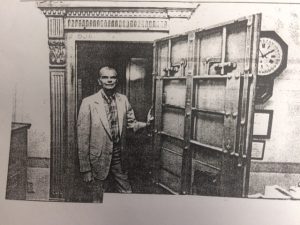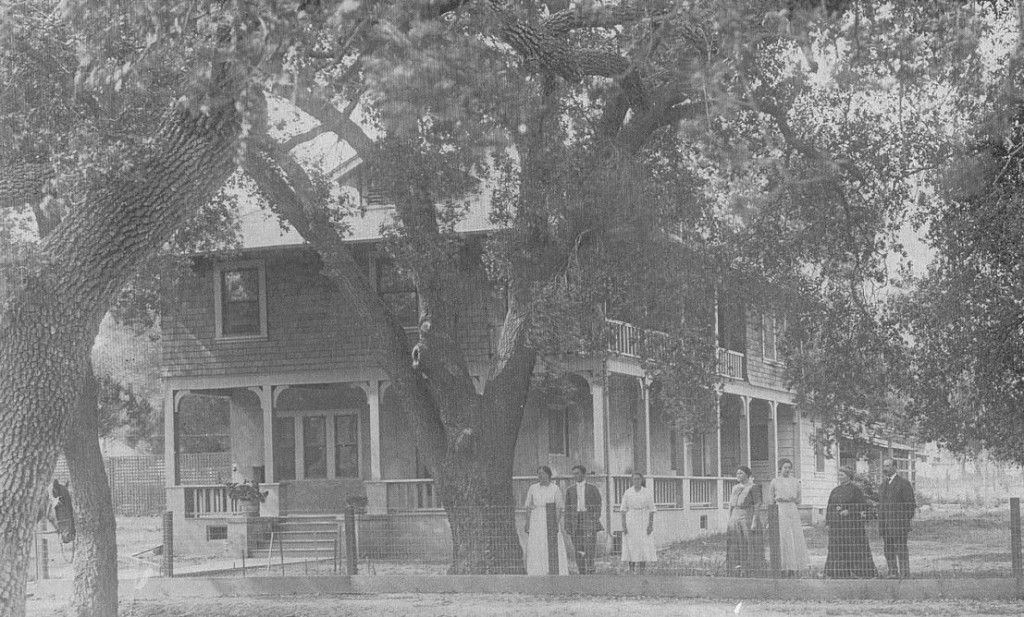This article first appeared in the Ojai Valley News in the October 22, 1969 edition. It is reprinted here with their permission. The author is Ed Wenig.
“Nordhoff vs. Ojai”
by
Ed Wenig
Legend has that Mrs. A.W. Blumberg, wife of the builder of the first hotel in the Ojai Valley in 1874, insisted on naming the proposed new town “NORDHOFF” because she said, Charles Nordhoff had called attention to the valley. Husband A.W. Blumberg and promoter R.G. Surdam graciously went along with the suggestion.
Nordhoff did write much about California in a book titled “CALIFORNIA For Health, Pleasure and Residence”, but Ojai Valley was not mentioned. He also wrote for newspapers and magazines and, it is said wrote about the valley. The claim is controversial and has not been substantiated, in the view of historians of recent times.

In April 1894, Charles Nordhoff did register at the Gally Cottages, and a few days later lectured at the Congregational Church in Nordhoff on “OLD TIMES IN CALIFORNIA.” The local newspaper reported in two columns everything Nordhoff remembered, but he apparently said nothing about visiting the valley before the town was named for him.
In 1894, the people of Ojai Valley were really stirred up about the name “Nordhoff,” for the only town in the valley. The editor of “The Ojai” suggested in an editorial that the matter had been fully discussed, and that every man, woman, and child in the two valleys, resident or visitor, should be polled. The result of such an election would determine whether the question should be forever dropped, or the proper steps be taken to have the name changed.
Feelings run high
Letters literally poured into the editor of “The Ojai” for and against changing the name of the town. Feelings ran high. In a later editorial the editor gave a mild admonition that letters on the subject should be “cleanly worded communications intended for the common good.”
Those who favored changing the name NORDHOFF to OJAI argued that postal clerks throughout the nation were mistaking Nordhoff for Norwalk; that people outside of the valley were confused as to what the post office address really was; that Ojai Valley was losing the effect of much advertising by having another name associated with Ojai; that the name Ojai was unique, the only name of its kind in the whole wide world! One petition was even circulated in east Ojai Valley for the establishment of a new town in the valley to be called “Ojai”.
Those who opposed the name change explained the “Nordhoff” was the name chosen by the people who founded the town 20 years before in honor of Charles Nordhoff, New York writer and traveler, who, they said, had mentioned the Ojai Valley in a newspaper article; that “Nordhoff” had too long been attached to the location to cast it aside unceremoniously.
Twenty-three years later, without much fanfare, “The Ojai”, on March 31, 1917, carried this notice under the Headline: “Now it’s Ojai”: “This telegram from Washington is self-explanatory. H.R. MORSE, FOOTHILLS HOTEL, YOU MAY ANNOUNCE CHANGE OF NAME FROM NORDHOFF TO OJAI. BEST WISHES. (SIGNED) JAMES D. PHELAN, U. S. SENATOR.”
Footnote: Those who have read “Mutiny on the Bounty” will be interested to know that its co-author, Charles Bernard Nordhoff, who was a student at Thacher School in 1898-1899, was the grandson of the Charles Nordhoff for whom the town was named.








